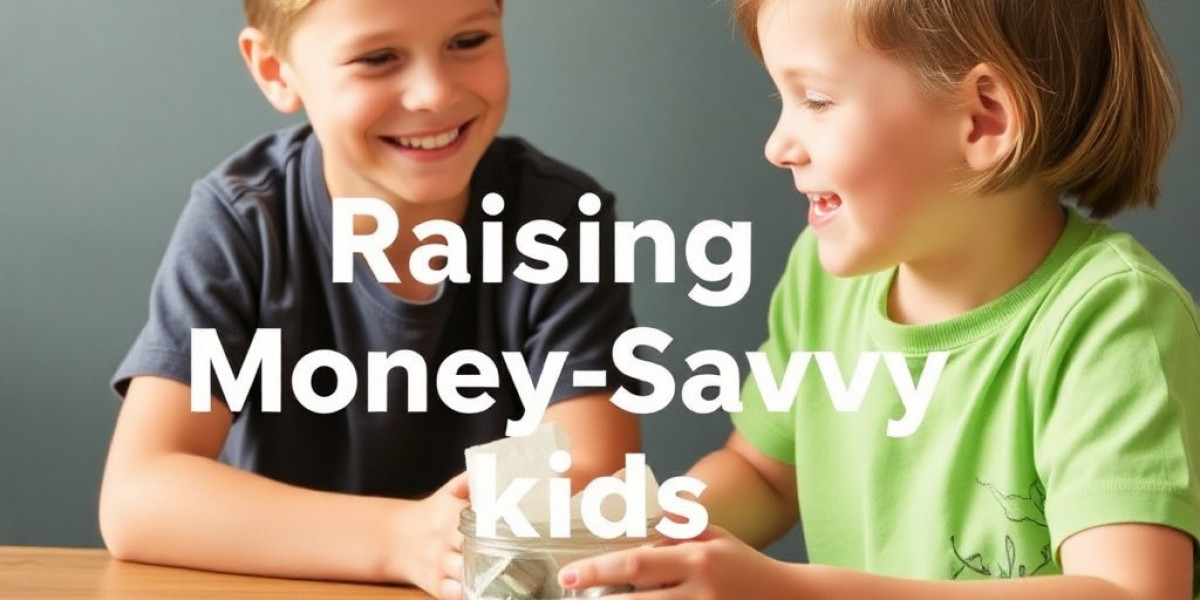G'day mate. Let's have a real yarn about something that quietly stumps a lot of Aussie parents: money. We’re great at teaching our kids to kick a footy, swim between the flags, and steer clear of a grumpy magpie in spring. But when it comes to talking about dosh, many of us get a bit tongue-tied. It can feel awkward, complicated, or just something to be dealt with "later on."
The problem is, "later on" often arrives too late. A 2024 survey by Financial Mindfulness Australia found that nearly 60% of Australian adults wished they had learned more about money management as children. They’re navigating mortgages, superannuation, and the ever-tempting world of Afterpay, often learning by costly trial and error. We wouldn't let our kids learn to swim by chucking them in the deep end, so why do it with their finances?
We want to raise kids who are confident, capable, and savvy, not just with their schoolwork and their social lives, but with their wallets too. This brings us to a fundamental question that plays on the minds of parents across the country: Teaching Kids About Money: How Young is Too Young?
The simple, fair dinkum answer is: it’s almost never too early to start. The secret isn’t about lecturing them on interest rates when they're in preschool. It's about planting small, age-appropriate seeds of financial wisdom that will grow with them. This guide will walk you through the what, when, and how of setting your little tackers on the path to becoming money-smart adults.
The Ankle-Biter Stage (Ages 3-5): Making Money Tangible
At this age, money is an abstract concept. They see you tap a plastic card and walk away with a trolley full of groceries. It's pure magic! The goal here is to make money real, tangible, and understandable.
Core Concepts:
- Money is for buying things: Connect the act of handing over coins to receiving a treat.
- Coins have names and values: Introduce them to the different coins. The big 50-cent piece, the gold dollar coin.
- We have to wait for things we want: This is the first, gentle introduction to delayed gratification.
How to Do It:
- Play Shop: This is the absolute classic for a reason. Set up a pretend shop at home with toys and snacks. Use play money (or real coins under supervision) to "buy" items. This teaches the basic principle of exchange in a fun, hands-on way.
- The Three-Jar System: Forget the single piggy bank. Get three clear jars and label them: SAVE, SPEND, and GIVE. When they receive a gold coin from their grandparents, help them decide how to split it. The SPEND jar is for small, immediate treats. The SAVE jar is for a bigger toy they really want. The GIVE jar is for donating to a cause or buying a small gift for someone else. It's a powerful visual lesson in money having different jobs.
- Narrate Your Spending: As you shop, talk about what you’re doing. "We have $5 to spend on fruit. Should we get the apples or the bananas?" or "This milk costs $2. I'll use this gold coin to pay for it."
The Primary School Years (Ages 6-10): Making Choices & Setting Goals
This is the golden age for locking in foundational habits. Kids at this age are capable of understanding cause and effect, and they're starting to desire more expensive things like LEGO sets, video games, or brand-name runners. This makes it the perfect time to introduce the real building blocks of financial literacy for students, using their own goals to create powerful, hands-on lessons.
Core Concepts:
- Making choices and opportunity cost: If you spend your money on this, you can't spend it on that.
- The value of saving: Working towards a goal is rewarding.
- Earning money: Connecting effort with financial reward.
How to Do It:
- Introduce Pocket Money: Whether you tie it to chores or give it as a regular allowance is a personal choice. The key is consistency. Give them a set amount each week and let them manage it. This is their first "paycheque."
- Open Their First Bank Account: This is a huge milestone! Take them into a bank and open up a proper youth savings account. The old CBA Dollarmites program, for all its controversy, understood one thing: getting kids familiar with the banking environment early demystifies it. Having a passbook or seeing their balance grow online makes saving feel official and exciting.
- Set a Savings Goal: Is there a toy they desperately want that costs $40? Help them figure out how many weeks of saving it will take. Create a chart and let them colour in a square for every dollar they save. When they finally buy that item with their own hard-earned dosh, the sense of achievement is immense and far more memorable than if you'd just bought it for them.
The Tween & Early Teen Zone (Ages 11-14): Budgeting and Building Independence
As kids hit high school, their financial world expands dramatically. They have school excursions, movie outings with mates, and a burning desire for the latest tech. This is the perfect time to hand over more responsibility and introduce the concept of budgeting.
Core Concepts:
- Budgeting 101: Planning how to use a set amount of money over a period of time.
- Needs vs. Wants: Differentiating between what they truly need and what's just a fleeting desire.
- The reality of digital money: Understanding that tapping a card or phone is still spending real money.
How to Do It:
- Hand Over Responsibility: Instead of giving them lunch money every day, give them a weekly or fortnightly amount and make it their responsibility to budget it. If they blow it all by Wednesday, they learn a natural (and relatively painless) consequence: they're making their own sandwiches for the rest of the week.
- Introduce Digital Tools: There are plenty of great, safe apps designed for teens that allow them to track their spending and saving. This gets them comfortable with the digital finance world in a controlled environment.
- Promote Financial literacy for students: At this age, many schools begin to introduce financial concepts. Talk to them about what they're learning. Champion these programs and supplement them at home. Explain that this isn't just boring schoolwork; it's learning the rules to a game that everyone in the adult world has to play. The better they understand the rules now, the better they'll be at playing the game later.
The Late Teen Years (Ages 15-18): The Big Picture
Now we’re getting into the grown-up stuff. These young adults are likely getting their first part-time job, thinking about a car, and are on the cusp of making major financial decisions.
Core Concepts:
- Understanding a Payslip: Gross vs. net pay, tax, and the magic of superannuation.
- The Power of Compound Interest: Albert Einstein reportedly called it the eighth wonder of the world. It’s the single most important concept for wealth creation.
- Good Debt vs. Bad Debt: Understanding how a HECS-HELP debt for uni is different from a high-interest credit card debt for a new outfit.
- Introduction to Investing: The basics of shares, ETFs, and why starting early is a massive advantage.
How to Do It:
- Deconstruct Their First Payslip: When they get their first job at Maccas or the local IGA, sit down with them and go through their payslip. Explain what PAYG tax is and where it goes. Most importantly, point out that little line for superannuation and explain it's "future them's" money, growing quietly in the background.
- The Superannuation Chat: Show them a compound interest calculator online. Plug in a hypothetical $10 a week from their part-time job going into super. Show them the projected balance at age 65. The numbers are often mind-boggling and provide a powerful, tangible reason to care about super from day one.
- Teach Them to be Sceptical Consumers: The world of "Buy Now, Pay Later" is targeted directly at them. Teach them to read the fine print, understand the late fees, and see these services for what they are: a form of debt.
- Get Them Involved in Financial Decisions: Ask for their help in comparing phone plans. Talk them through the process of getting car insurance quotes. These are real-world lessons that build practical skills and confidence.
The Final Yarn: It's a Marathon, Not a Sprint
Raising financially capable kids won't happen overnight. It's a series of small, consistent conversations and teachable moments. It’s about letting them make small, safe mistakes with a ten-dollar note so they don't make massive, life-altering ones with a ten-thousand-dollar loan down the track.
The goal isn't to raise tight-arses who never enjoy their money. It's to raise kids who respect money, understand its power, and can use it as a tool to build the life they want. By starting the conversation early and letting it evolve as they grow, you give them a fair go at a financially secure future. And that’s one of the best gifts a parent can give. Good on ya for having a crack.







